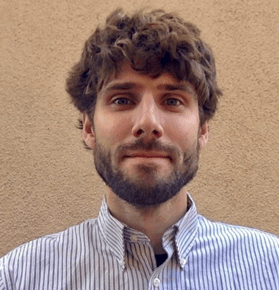
Associate Professor
Department of Earth and Planetary Science
University of New Mexico
| 2018 - Present | Associate Professor, Department of Earth and Planetary Science | University of New Mexico |
| 2013 - 2018 | Assistant Professor, Department of Earth and Planetary Science | University of New Mexico |
| 2011 - 2012 | Postdoctoral Scholar, Division of Geological and Planetary Science | California Institute of Technology |
| 2011 | Geological Science | University of Oregon |
| 2006 | BA, Environmental Studies | Warren Wilson College |
| 2019 | IRIS Input to CORES Writing Committee | |
| 2017 - 2019 | PASSCAL Standing Committee | |
| 2016 - 2018 | PH5 Working Group | |
| 2014 - 2018 | IRIS Intern Orientation Lecturer | |
| 2013 - 2016 | EarthScope Steering Committee | |
| 2015 | Writing Committee, Future Geophysical Facilities Required to Address Grand Challenges in the Earth Sciences | |
| 2015 | IRIS Intern Mentor | |
| 2014 | IRIS Workshop Program Committee | |
| 2013 - 2014 | Amphibious Array Steering Committee | |
| 2014 | IRIS/Geophysical Society of Houston Joint Workshop Organizing Committee | |
| 2012 - 2014 | TA Working Group |
| 2019 - Present | Seismological Society of America 2020 Meeting Co-Chair | |
| 2018 - Present | Associate Editor, Seismological Research Letters | |
| 2016 - 2018 | GeoPRISMS Distinguished Lecturer | |
| 2018, 2016, 2015, 2014 | Editor’s Citation for Excellence in Reviewing: GRL (2016, 2018), JGR (2015), G-Cubed (2014) | |
| Panelist for NSF Geophysics, PREEVENTS | ||
| Reviewer for NSF Geophysics, EarthScope, Tectonics, Marine Geology and Geophysics, Integrated Earth Systems, CAREER, GeoPRISMS, CSEDI, Geoinformatics, Antarctic Research | ||
My work as a researcher and educator greatly benefits from the infrastructure and culture of the IRIS community. I engage in observational seismology using archived data from long-term observatories such as the ANSS and GSN, temporary community-driven projects such as the Transportable Array, and new portable array data collected by collaborators and the research group that I lead. These experiences give me an applied perspective on multiple modes of operation for modern seismologists, including what capabilities currently help us thrive and what barriers we should try to mitigate to set the stage for future advances.
I am excited by the growing possibilities for discovery enabled by the growth of long-term observatory data, newly available seismic instrumentation, and advanced computational methods to maximize the knowledge gained from the cumulative data archives. Perhaps, more than ever in the history of IRIS these possibilities for discovery span solid Earth, environmental, and planetary processes. The diversity of research across the IRIS community highlights the importance of providing flexible workflows for accessing and analyzing unprecedented quantities of data in new ways, adaptable portable instrumentation for multi-scale observational projects in adverse conditions, and an innovative community framework for recruiting, training, and supporting early career scientists in our evolving field. As a student, postdoc, and faculty member I have experienced IRIS as a world-class community-governed organization that is collegial, ambitious, and responsive to feedback. As a potential member of the Board of Directors, I would prioritize these core attributes as we encounter new challenges and opportunities under NSF SAGE and prepare for a new competition for stewardship of NSF’s seismic and geodetic infrastructure.